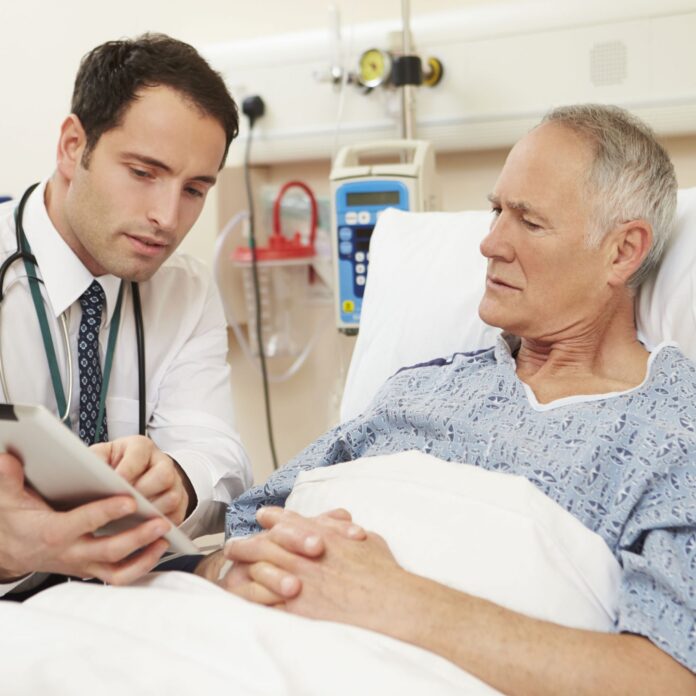5G and MEC allow healthcare data to be processed at a much higher rate
While IoT has become a household term, IoMT or the Internet of Medical Things, isn’t as well known. IoMT represents a subcategory of IoT that encompasses the connections and devices within healthcare. 5G and Multi-access Edge Computing (MEC) are powerful tools supporting IoMT that are helping make the promise of a more connected, and therefore, more effective healthcare system a reality. Developers of these devices can take advantage of the data transfer speeds required for the real-time solutions physicians need and for connecting IoMT devices to each other and to the managed servers and databases that keep track of them.
Verizon’s Vice President of Business Development, Public Sector, Maggie Hallbach spoke with RCR Wireless News to discuss in more detail what Verizon is doing to ensure that 5G and MEC transform how we receive medical care.
What are some of Verizon’s key areas of focus within healthcare?
One of the first areas is really around access to care. There is a heavy emphasis on healthcare accessibility and that then extends into the immediacy of diagnosis and treatment. Then, there is the ongoing care. Do I have access to high quality care when I have a problem? What is the rate that I am effectively diagnosed? And what is my experience of long-term support? These areas result in a variety of different use cases.
The conversation is about all of the places that data starts coming together, and the rate of data aggregation, followed by the rate that data is analyzed so that an actionable outcome can be achieved.
Tell me more about the role that 5G and Multi-access Edge Computing (MEC) play in advancing medical care.
Today, we have constraints on the 4G and 3G sides when it comes to the number of devices that connect in. With 5G … New Radio, that totally changes. 5G allows for an incredible number of sensors to be connected to a single radio network node, which has been one of the promises of IoT: The enablement of a large number of devices to ping a single radio node.
When you combine 5G with MEC capability, you’re then able to process this data at a much higher rate.
Data scientists are working on creating mining tools that take in data in an unstructured way and then allow for the creation of actionable insights out of that data. You have to figure out how to take all of this unstructured data and put it to work at scale, and you have to do it in a way that is highly secure. It has to be encrypted. It then needs to be delivered to the person who has to use it, nearly in real time. That is what 5G and multi-access edge computing promise.
You mentioned that the data has to be highly secure. How can a patient or medical professional be sure that any sensitive patient data on Verizon’s networks remain secure?
One of the things Verizon is known for is our ability to support a zero-trust architecture, which allows for a lot of confidence when you’re handling highly sensitive information, like patient data, when you’re not only moving across a private network, but also a commercial network.
Beyond the key areas you mentioned, where else do you see 5G being used in healthcare?
Another thing that is on the horizon is the ability to provide video and three-dimensional images. Further, humans, while intelligent, are sometimes not great at sensing patterns, and so one of the more exciting developments is the ability to build AI algorithms that can more effectively detect abnormalities in these images.
Also, postoperatively, think of your connections. [That] could be a pacemaker or a blood glucose meter, for example. The number of connections that you can have — over that zero-trust architecture that I mentioned — to your doctor, who can be dynamically monitoring your health even if you’re sitting at home.
Let’s talk more about this idea of access to healthcare. How is Verizon making sure that those in rural locations will benefit from these advancements in healthcare?
The pandemic has been horrific in so many ways, but we do see these little silver linings. What we discovered when we provided students in rural areas with connectivity for remote learning was that when the students were given accessibility to do schoolwork, they also then had access to community healthcare. Further, we saw that this wasn’t just connectivity for the student; it was actually benefiting the whole family. The entire family now had access to the internet in a way that they had never had before.
We see this as a tremendous opportunity for us to continue investing in rural connectivity for access to things like healthcare. What is so exciting about the C Band auction [is], we now have the ability to continue to densify our network in those areas.
How do medical professionals feel about these advancements? Are they excited or apprehensive?
Verizon joined with Emory Healthcare to participate in the Emory Healthcare Innovation Hub. One of the things that is so important about the work that we are doing with the Hub is that it’s a true partnership with the clinical community and medical industry around driving dramatically improved healthcare delivery and outcomes. One of the things medical professionals also recognize is that healthcare has not benefited from the cost savings that other industries have benefited from with technology advancements.
Therefore, there is a push [within the medical industry] to figure out ways for the technology enhancements that are occurring in a lot of other industries to drive cost out of the healthcare industry. Being able to tighten the relationship between the clinical community and the technology community, and then joining forces to work with policy makers and the FDA can speed up rate of healthcare, while lowering costs.

